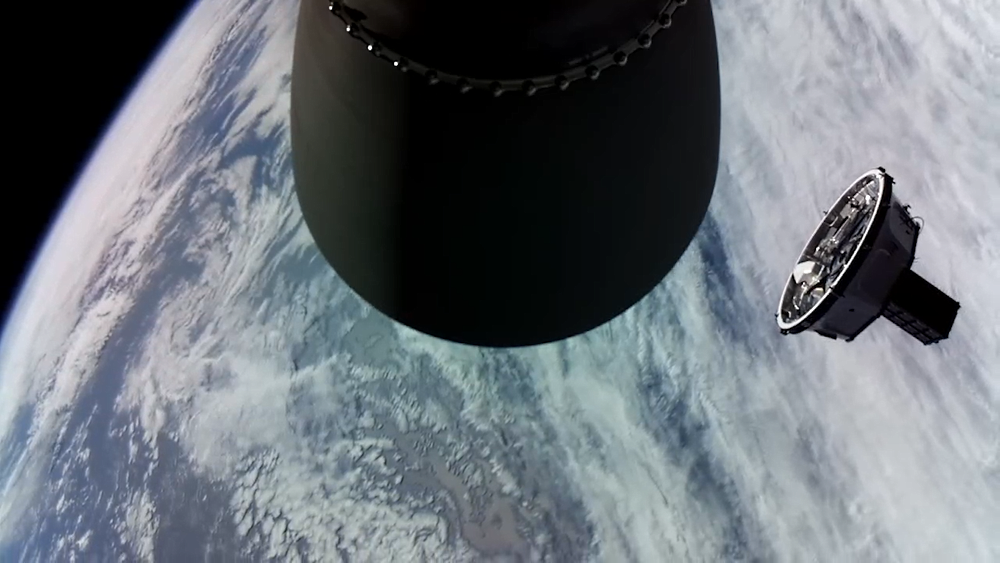
Start of RN Electron, photo by Rocket Lab
Accident investigation
The cause of the accident was quickly found due to the fact that it was not accompanied by catastrophic destruction, and the ground MCC received telemetry after it. The rocket, launched on July 4, successfully passed the sections of the first stage operation and the separation of the first and second stages, the second stage engine was successfully turned on and the head fairing was dropped. But in the region of 341 seconds of flight, the second-stage engine was abnormally stopped, which led to the impossibility of entering orbit and the loss of the payload.

Second stage with head fairing
Power remained on the step, and telemetry continued to flow to the ground control center. After analyzing 25 thousand telemetry channels and full-scale modeling, it turned out that one electrical connection was the direct cause of the accident. The contact that was constantly interrupted during the flight caused an increase in resistance and heating of the area around the connection. The compound (polymer resin) used for fastening and insulation melted, and the wires fixed by it fell off, breaking the power supply to the engine. The problem turned out to be resistant to standard testing, so the stage successfully passed vibration and thermal vacuum tests, as well as burn-through (short-term activation of the complete stage). The accident scenario was reproduced on the ground and additional tests were developed,to which the missile will be exposed in order to avoid a repetition of the incident. Rocket Lab plans to return to flying in August. In 2019, Electron became the fourth in terms of launch frequency after the Long March, Soyuz and Falcon 9, and the company plans not to stop there.
Increased lifting capacity

View of the third stage with a dispenser and satellites from the second stage, photo by Rocket Lab
In early August, Rocket Lab announced an increase in the carrying capacity of the Electron. Now the rocket can launch not 150 kg, but 200 kg into a sun-synchronous orbit with an altitude of 500 km, and up to 300 kg instead of 225 can be sent to lower orbits. The upgrade was made possible thanks to improvements in battery pack technology, the electricity of which drives the engine pumps , and experience in operating engines. 13 Electron rocket launches are 130 spent Rutherford engines (9 in the first stage, 1 in the second). This, along with over a thousand hours of ground testing, allowed engineers to better understand the capabilities and limits of the units, and understand how to squeeze even more out of them.
Parachute system testing soon
Shots from the final throw tests
Rocket Lab is actively working on the reusable first stage. As a method of soft landing, an air grab was chosen - the stage will open the parachute, for which it will be caught by the helicopter. So far, a series of throw tests of the parachute system has been successfully completed, confirmation of its characteristics allows us to proceed to the next stage - in flight 17, which should take place at the end of 20 or 21, the first stage after separation will open the parachute and land on the water, then it will be caught and studied ...

The second step from the right with a white transition compartment is the first one on which parachutes will be installed.
In general, it is worth following the news from Rocket Lab, it looks like there will be even more interesting things.